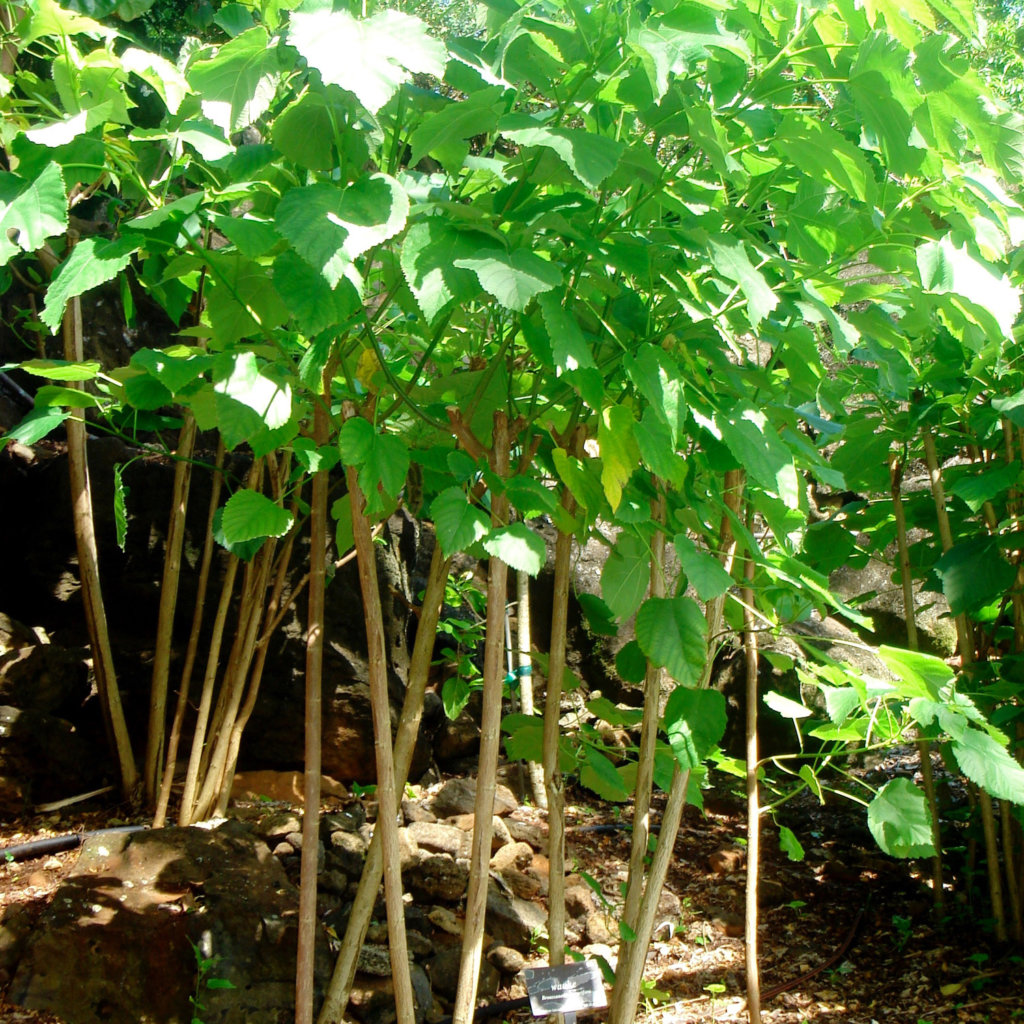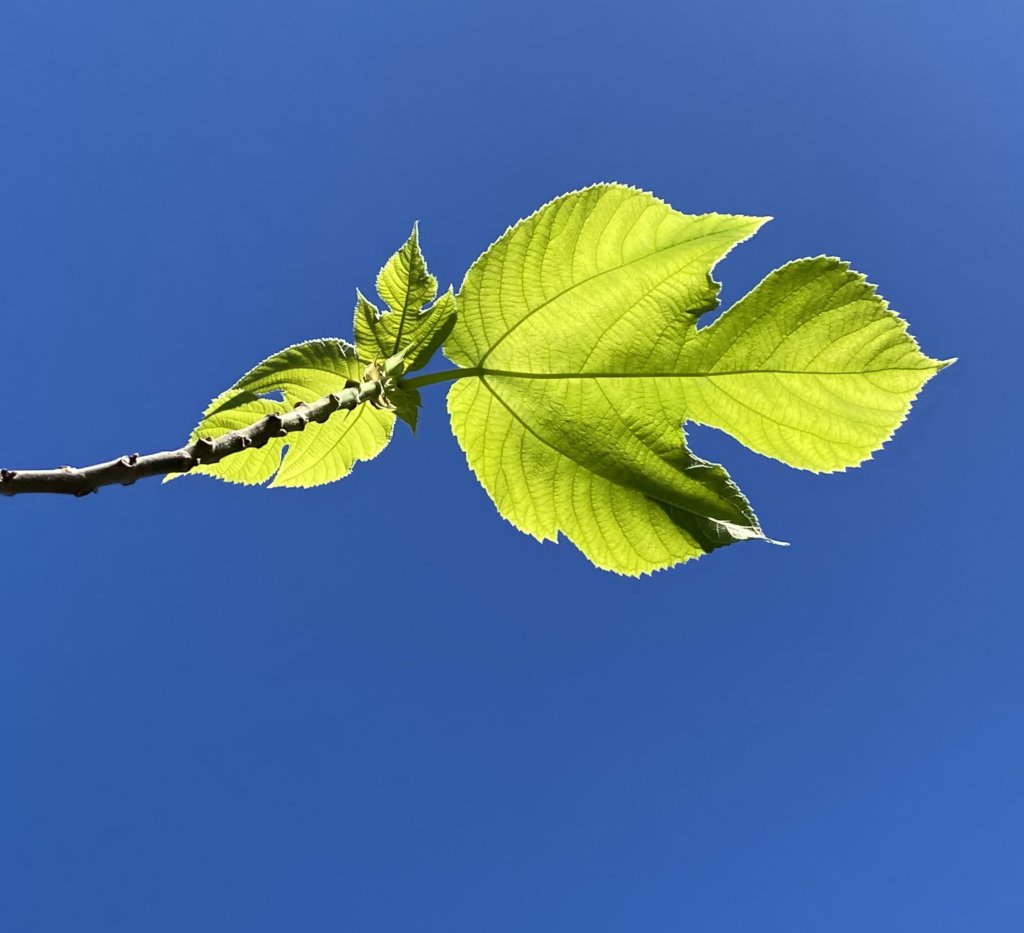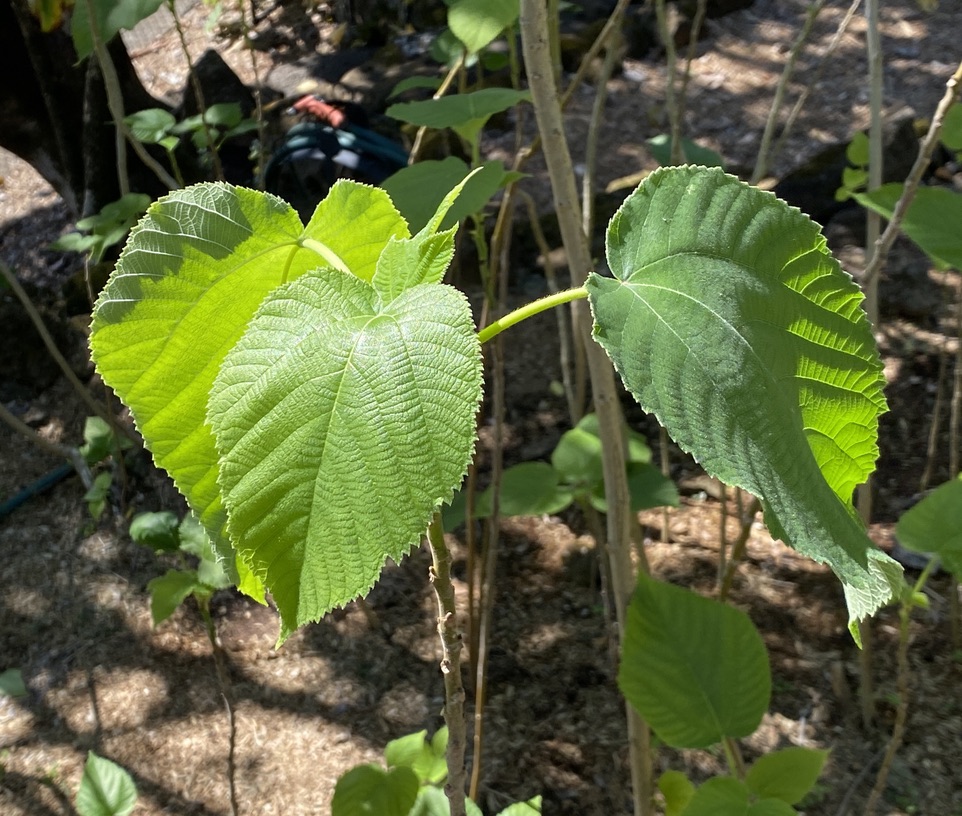Wauke



Broussonetia papyrifera
Polynesian Introduction
Shrubby tree brought to Hawaiʻi by Polynesians for its quality fiber bark. Hawaiians pounded the inner bark into soft durable kapa that was used for bedding, clothing, wrapping, flags, ceremonial uses, and decoration.
Originally from Eastern Asia, wauke is well known throughout the Pacific for its usefulness. The bark is manufactured into a tough and durable barkcloth which can function as cloth or paper depending on its preparation – a long process involving scraping, soaking, fermenting, beating, and sometimes oiling, dyeing, and stamping with designs.
In Hawaiʻi, kapa was manufactured mainly from wauke and was of prime importance for clothing – skirts, capes, loincloth, sandals, and for sheets and bedding, being somewhat washable and very warm and lasting a year or so. It was also used for ceremonial purposes and was wrapped around the ʻiwi (bones) of the ancestors. Another source of kapa was māmaki, but wauke was more valuable because it was warmer, more flexible, and more resistant to water.
Cultivation – Wauke grows best in moist areas, along streams, in forests, wherever soil is rich, and there is protection from the wind. Nurtured and carefully tended by both men and women, wauke was grown around loʻi (taro pond fields) and near homesites in thick strands of 8-9 foot tall trees. Keiki grow from roots of established plants, so the wauke grove extends outwards naturally.
Preparation – As the wauke tree grows, planters cut off the side branches, so a straight trunk stalk without branch holes can be stripped. The trunks are stripped of bark, as thick as a finger and about four feet long. The outer bark is peeled off. The inner bark fibers, called bast, are then soaked in running water, such as a high tide pool. This part of the process breaks down the woody fibers and washes away the starch. A complicated process of soakings and fermentation follows, leaving the fine fibers of the moist inner bark still tough and resilient when finally removed from the waters. At this time in the process, the women would often twist cordage out of the fibers, for use as fishnets (ʻupena), and as carrying nets (kōkō) from which to hang calabashes of wood and gourds.
After repeated soaking and fermentation, kapa is beaten on smooth rocks and sun-dried. Bundles of kapa are laid between layers of banana leaves to ferment and soften. These “cakes” of wauke are then kneaded until elastic. When ready, the bundle is laid on a long piece of wood with a flat even surface, called a kua kuku. This part of the process was historically done by women. The pulp is then beaten with a mallet until a solid strip forms. The beating establishes a rhythm with resonating sounds, said to send secret codes from village to village. The strips are then soaked again and expanded after beating. It is often doubled over and beaten again. Most wooden beaters used in the final stage are four-sided, mode from ohiʻa wood and incised with geometric designs and patterns. The kapa maker often leaves their “watermark” imprinted on the kapa. These can be seen by holding the kapa up to the light. At this point in the process, the cloth is hung in the sun to dry and bleach whiter.
The quality of kapa varies according to the bark quality and skills of the maker. After the kapa is completed, intricate designs are added with dyes and stamps. These are unique to Hawaiʻi and were considered a lost art form until recently. The beaters, anvils, and stamps were historically made by men. The dyes came from natural sources. Pigmentation comes in many colors, black from mud, brown from kukui roots, red from kukui bark, yellow and orange from ʻolena, red from noni bark, and yellow from noni root. The dyes are fixed to cloth with mordants of salt, urine, mud, and coral. Geometric designs with inherent symbolism, such as lines, triangles, circles, and chevrons are imprinted using stamps carved out of bamboo (ʻohe kāpala). Sticky adhesives are used to waterproof kapa and aromatic oils, seeds, and flowers are used to scent it.